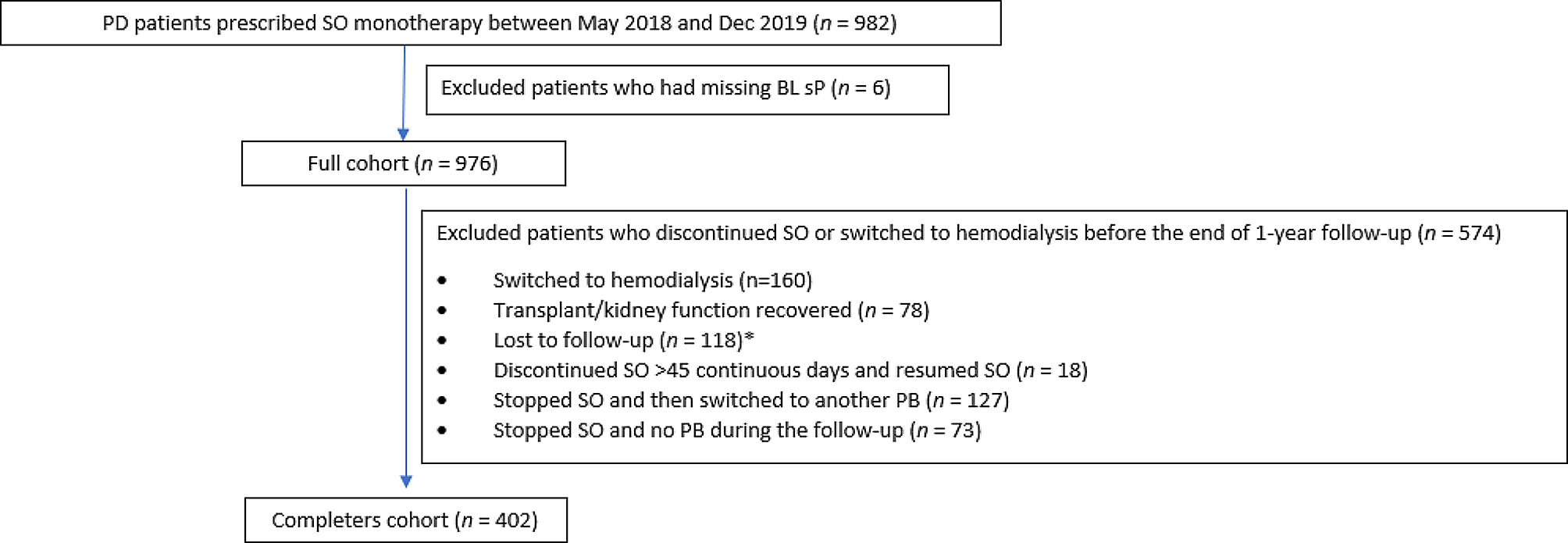
Karkar A, Wilkie M. Peritoneal dialysis in the modern era. Perit Dial Int. 2023;43(4):301–14.
US Renal Data System. 2022 USRDS annual data report: epidemiology of kidney disease in the United States. National Institutes of Health, National Institute of Diabetes and Digestive and Kidney Diseases, 2022. Accessed December 1, 2023. https://usrds-adr.niddk.nih.gov/2022.
Covic A, Kothawala P, Bernal M, Robbins S, Chalian A, Goldsmith D. Systematic review of the evidence underlying the association between mineral metabolism disturbances and risk of all-cause mortality, cardiovascular mortality and cardiovascular events in chronic kidney disease. Nephrol Dial Transpl. 2009;24(5):1506–23.
Lopes MB, Karaboyas A, Zhao J, Johnson DW, Kanjanabuch T, Wilkie M, Nitta K, Kawanishi H, Perl J, Pisoni RL, PDOPPS Steering Committee. Association of single and serial measures of serum phosphorus with adverse outcomes in patients on peritoneal dialysis: results from the international PDOPPS. Nephrol Dial Transpl. 2023;38(1):193–202.
Kidney Disease: Improving Global Outcomes (KDIGO) CKD-MBD Update Work Group. KDIGO 2017 clinical practice guideline update for the diagnosis, evaluation, prevention, and treatment of chronic kidney disease–mineral and bone disorder (CKD-MBD). Kidney Int Suppl. (2011). 2017;7(1):1–59.
Evenepoel P, Meijers BK, Bammens B, Viaene L, Claes K, Sprangers B, Naesens M, Hoekstra T, Schlieper G, Vanderschueren D, Kuypers D. Phosphorus metabolism in peritoneal dialysis- and haemodialysis-treated patients. Nephrol Dial Transpl. 2016;31(9):1508–14.
Cupisti A, Gallieni M, Rizzo MA, Caria S, Meola M, Bolasco P. Phosphate control in dialysis. Int J Nephrol Renovasc Dis. 2013;6:193–205.
Rroji M, Seferi S, Cafka M, Petrela E, Likaj E, Barbullushi M, Thereska N, Spasovski G. Is residual renal function and better phosphate control in peritoneal dialysis an answer for the lower prevalence of valve calcification compared to hemodialysis patients? Int Urol Nephrol. 2014;46(1):175–82.
Tonelli M, Pannu N, Manns B. Oral phosphate binders in patients with kidney failure. N Engl J Med. 2010;362(14):1312–24.
Chiu YW, Teitelbaum I, Misra M, de Leon EM, Adzize T, Mehrotra R. Pill burden, adherence, hyperphosphatemia, and quality of life in maintenance dialysis patients. Clin J Am Soc Nephrol. 2009;4(6):1089–96.
Floege J, Covic AC, Ketteler M, Rastogi A, Chong EM, Gaillard S, Lisk LJ, Sprague SM, PA21 Study Group. A phase III study of the efficacy and safety of a novel iron-based phosphate binder in dialysis patients. Kidney Int. 2014;86(3):638–47.
Kalantar-Zadeh K, Parameswaran V, Ficociello LH, Anderson L, Ofsthun NJ, Kwoh C, Mullon C, Kossmann RJ, Coyne DW. Real-world scenario improvements in serum phosphorus levels and pill burden in peritoneal dialysis patients treated with sucroferric oxyhydroxide. Am J Nephrol. 2018;47(3):153–61.
Perez L, You Z, Teitelbaum I, Andrews ES, Reddin R, Ramirez-Renteria L, Wilson G, Kendrick J. A 6-month clinical practice pilot study of sucroferric oxyhydroxide on nutritional status in patients on peritoneal dialysis. BMC Nephrol. 2022;23(1):245.
Clase CM, Norman GL, Beecroft ML, Churchill DN. Albumin-corrected calcium and ionized calcium in stable haemodialysis patients. Nephrol Dial Transpl. 2000;15(11):1841–6.
Coyne DW, Ficociello LH, Parameswaran V, Anderson L, Vemula S, Ofsthun NJ, Mullon C, Maddux FW, Kossmann RJ, Sprague SM. Real-world effectiveness of sucroferric oxyhydroxide in patients on chronic hemodialysis: a retrospective analysis of pharmacy data. Clin Nephrol. 2017;88(8):59–67.
Kendrick JB, Zhou M, Ficociello LH, Parameswaran V, Mullon C, Anger MS, Coyne DW. Serum phosphorus and pill burden among hemodialysis patients prescribed sucroferric oxyhydroxide: one-year follow-up on a contemporary cohort. Int J Nephrol Renovasc Dis. 2022;15:139–49.
Berner T, Ferro C, Dieguez G, Metz S, Moore J, Szabo E, Kovesdy CP. Real-world phosphate binder use among dialysis-dependent patients with CKD. Nephron. 2023;147(10):583–90.
McCullough K, Port FK, de Sequera P, Rayner H, Pecoits-Filho R, Walpen S, Evenepoel P, Pisoni RL. DOPPS Country investigators. European hemodialysis patient satisfaction with phosphate binders is associated with serum phosphorus levels: the Dialysis outcomes and practice patterns study. Clin Kidney J. 2021;14(8):1886–93.
Wang S, Alfieri T, Ramakrishnan K, Braunhofer P, Newsome BA. Serum phosphorus levels and pill burden are inversely associated with adherence in patients on hemodialysis. Nephrol Dial Transpl. 2014;29(11):2092–9.
Fissell RB, Karaboyas A, Bieber BA, Sen A, Li Y, Lopes AA, Akiba T, Bommer J, Ethier J, Jadoul M, Pisoni RL, Robinson BM, Tentori F. Phosphate binder pill burden, patient-reported non-adherence, and mineral bone disorder markers: findings from the DOPPS. Hemodial Int. 2016;20(1):38–49.
Gong N, Xiao Z, Zhang F, Zhong X, He Y, Yi Z, Tang D, Yang C, Lin Y, Nie J, Ai J. Duration of serum phosphorus control associated with overall mortality in patients undergoing peritoneal dialysis. Kidney Dis (Basel). 2020;6(6):434–43.
Cernaro V, Calderone M, Gembillo G, Calabrese V, Casuscelli C, Lo Re C, Longhitano E, Santoro D. Phosphate control in peritoneal dialysis patients: issues, solutions, and open questions. Nutrients. 2023;15(14):3161.
Li L, Liang W, Ye T, Chen Z, Zuo X, Du X, Qian K, Zhang C, Hu X, Li J, Wang L, Ma Z, Yao Y. The association between nutritional markers and biochemical parameters and residual renal function in peritoneal dialysis patients. PLoS ONE. 2016;11(6):e0156423.
Shinaberger CS, Greenland S, Kopple JD, Van Wyck D, Mehrotra R, Kovesdy CP, Kalantar-Zadeh K. Is controlling phosphorus by decreasing dietary protein intake beneficial or harmful in persons with chronic kidney disease? Am J Clin Nutr. 2008;88(6):1511–8.
- The Renal Warrior Project. Join Now
- Source: https://bmcnephrol.biomedcentral.com/articles/10.1186/s12882-024-03633-8
